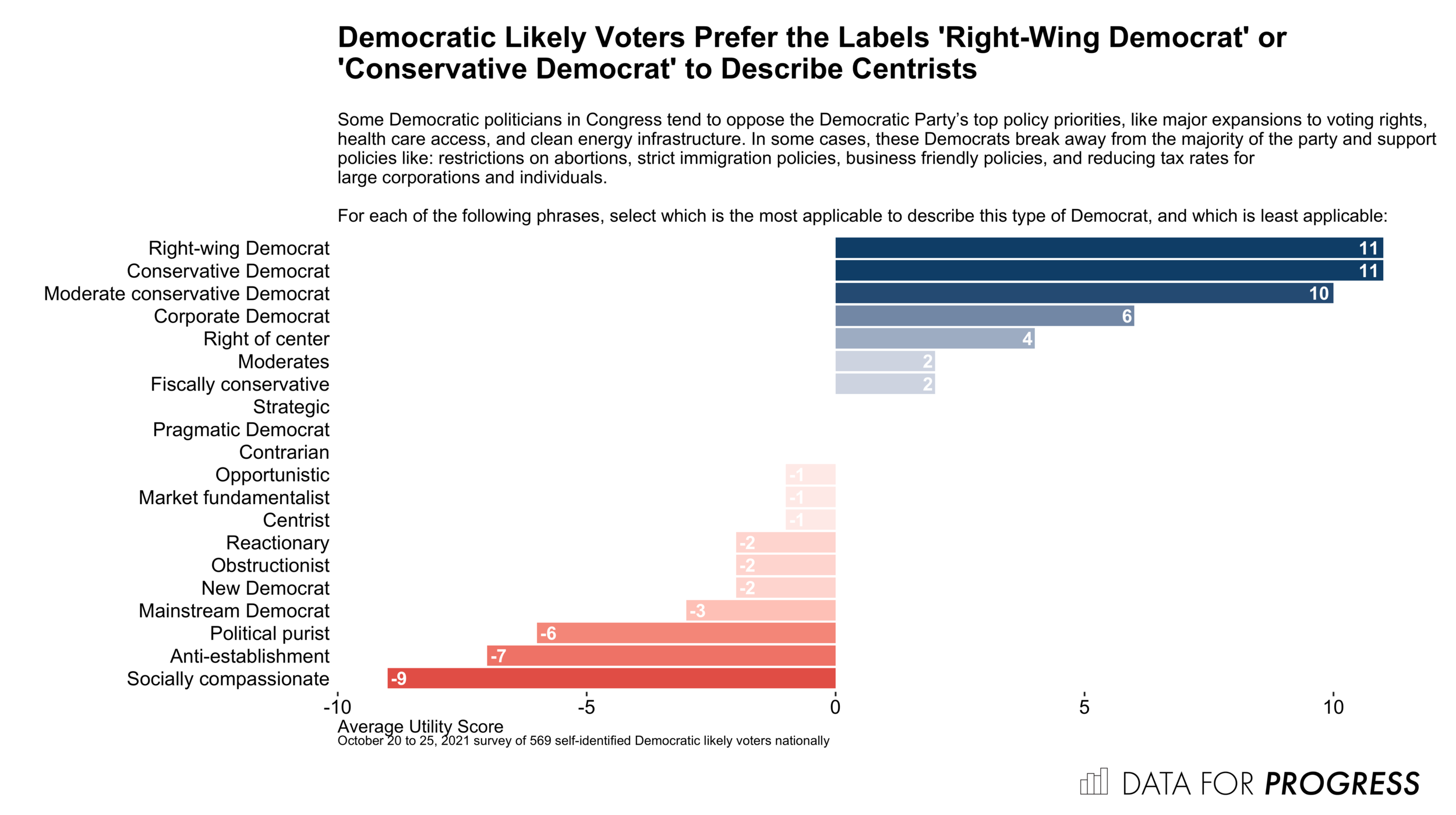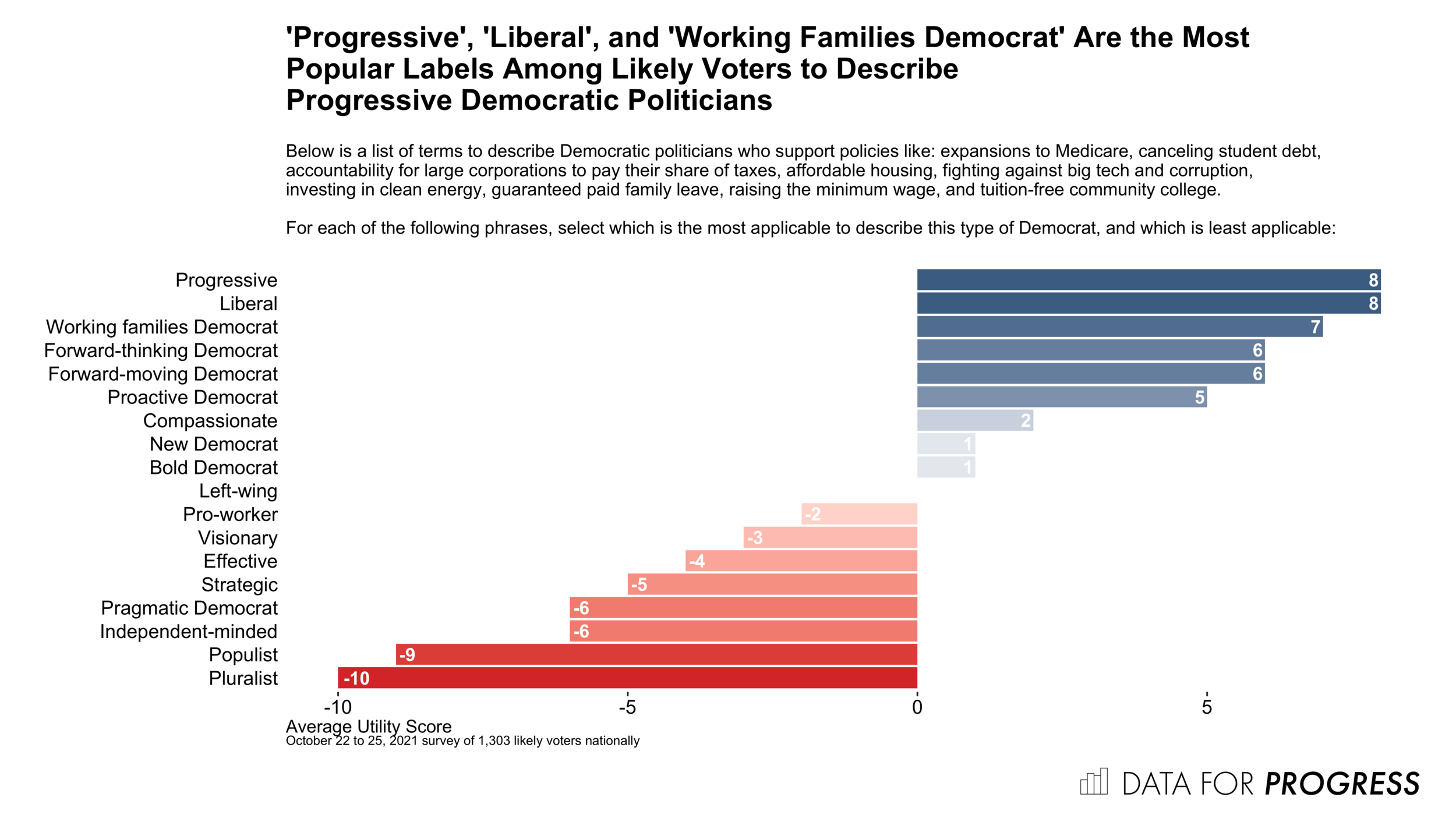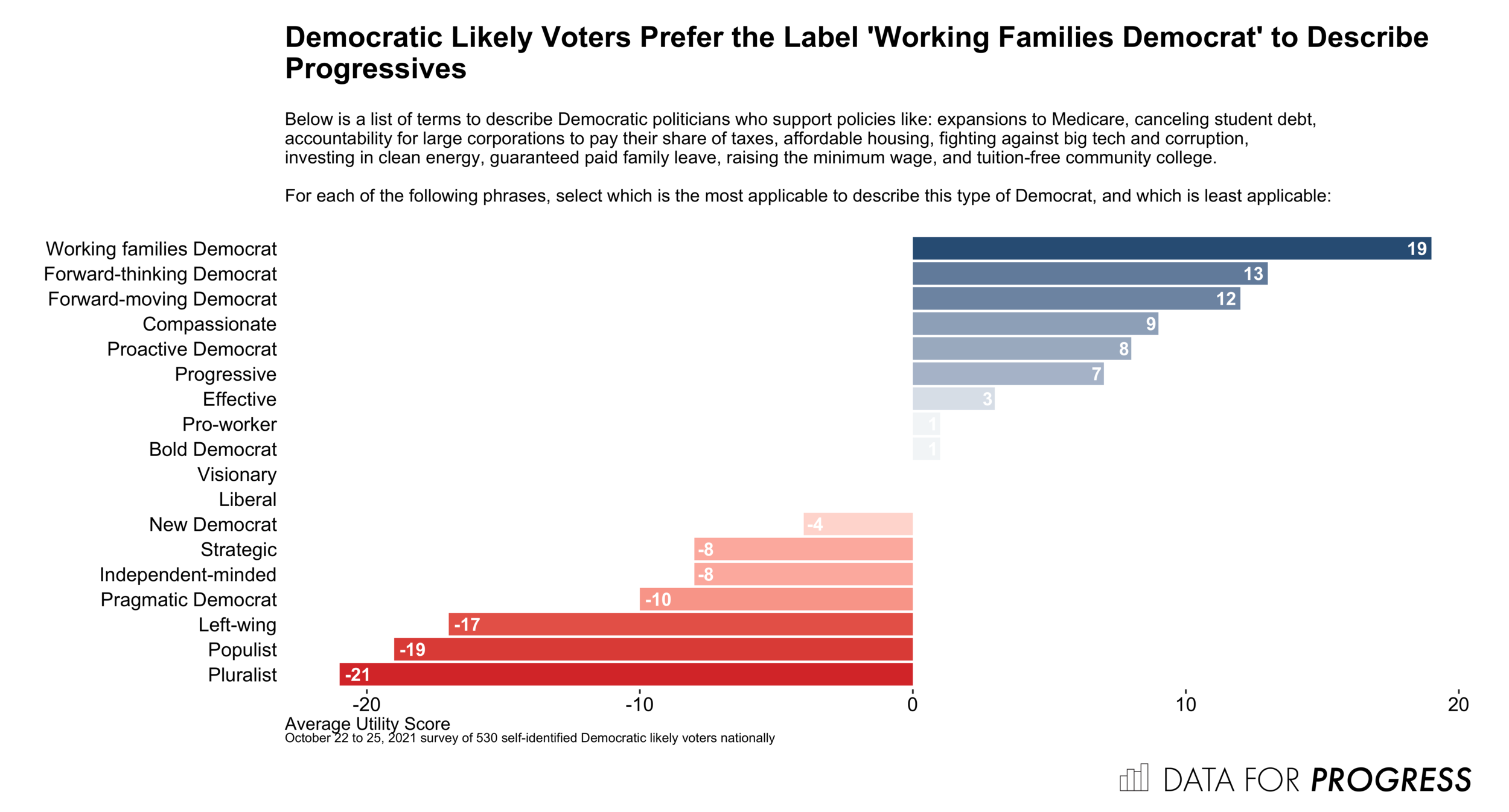Redefining the Labels “Centrists” and “Progressives” in the Democratic Party
By Kirby Phares and Evangel Penumaka
Over the past several months, Congressional debates over President Biden’s agenda have been framed as a battle between progressives and centrists within the Democratic Party. The strongest opposition over the bill’s contents and proposals to pay for the package, however, has come almost exclusively from Senator Joe Manchin and Senator Kyrsten Sinema — in the face of strong public opinion in favor of the agenda. Data for Progress polling has shown that the Build Back Agenda is popular among voters, that voters overwhelmingly support the agenda’s individual components, and that voters back how the plan would be paid for. This comprehensive package of Democratic priorities has both the backing of the public and a majority of Congressional Democrats and has brought to question whether “moderate” or “centrist” is fitting to describe the minority of opposition within the party as the voice of the middle-ground.
In a mid-October poll of 1,362 likely voters, Data for Progress and Way to Win tested how likely voters would describe these types of Democratic politicians through a MaxDif design. Likely voters were given a general description of typical policy stances before selecting which labels are most applicable and least applicable. From these preferences, average utility scores are then created to establish which labels were picked more often (positive scores) and which were picked less often (negative scores).
Among all likely voters, we find that the most preferred label to describe centrists is a “conservative Democrat.” Close behind are “moderate conservative Democrat” and “right-wing Democrat.” In contrast, the phrases voters viewed as the least applicable are “anti-establishment”, “socially compassionate”, and “political purist.” In the full list of terms we tested, we also included “centrist,” “moderate,” and “corporate Democrat,” the latter of which is also used by the media. We find that respondents view these labels as relatively neutral — voters don’t dislike these terms but prefer other labels. In contrast, the label “New Democrat” does receive some dislike among likely voters.
For likely Democratic voters, the most preferred labels for Democrats that break away from the majority of the party are “right-wing Democrat,” “conservative Democrat,” and “moderate conservative Democrat.” As expected, Democratic voters strongly do not associate “socially compassionate,” “anti-establishment,” and “political purist” with a conventionally moderate Democrat. Labels such as “strategic,” “pragmatic Democrat,” and “centrist” were neutral among Democrats. Similar to all likely voters, “new Democrat,” “obstructionist,” and “mainstream Democrat'' were also preferred less.
As a complement to the design on centrist labels, we also tested in a second poll how likely voters would describe progressive politicians in the Democratic party. We find that all likely voters prefer to label this type of politician as “progressive,” “liberal,” and “Working Families Democrat.” Other labels such as “New Democrat,” “Bold Democrat,” and “left-wing” were neither liked nor disliked by voters. On the other hand, voters say that “populist,” “pluralist,” “independent-minded,” and “political purist” are least applicable.
Likely Democratic voters strongly associated “Working Families Democrat” with politicians who support progressive policies. Democrats also prefer labels like “forward-thinking Democrat” and “forward-moving Democrat.” The list of labels that Democrats viewed as neutral included “pro-worker,” “Bold Democrat,” “visionary,” and “liberal.” Democratic voters also overwhelmingly disliked “pluralist,” “populist,” and “left-wing” as labels for progressives.
The weeks of intra-party negotiations on Biden’s agenda have made stark the divide between those united in passing comprehensive policies that will benefit hard-working Americans and the few who prefer to obstruct this. While we commonly use “moderate” or “centrist” to describe the latter, it is clear that these politicians are seen as more conservative than middling Democrats with mainstream views. In addition, the association between progressives and the term “working families Democrat,” particularly among Democratic likely voters, shows that voters have a sense of who within the party is willing to fight for the policies that will benefit the vast majority of Americans.
Kirby Phares (@kirbyphares) is a polling analyst at Data for Progress.
Evangel Penumaka (@evangelpenumaka) is a senior analyst at Data for Progress.
Methodology
From October 20 to 25, 2021, Data for Progress conducted a survey of 1,362 likely voters nationally using web panel respondents. The sample was weighted to be representative of likely voters by age, gender, education, race, and voting history. The survey was conducted in English. The margin of error is ±3 percentage points.
From October 22 to 25, 2021, Data for Progress conducted a survey of 1,303 likely voters nationally using web panel respondents. The sample was weighted to be representative of likely voters by age, gender, education, race, and voting history. The survey was conducted in English. The margin of error is ±3 percentage points.
In a MaxDiff (or Best-Worst) design, respondents are shown a series of questions and each time are shown a different subset of a list of items being tested. Each time, respondents chose their most favorite option and least favorite option. From this, an average utility score for each item is created. Positive average utility scores indicate the item was preferred more often. Negative average utility scores indicate the item was preferred less often.




